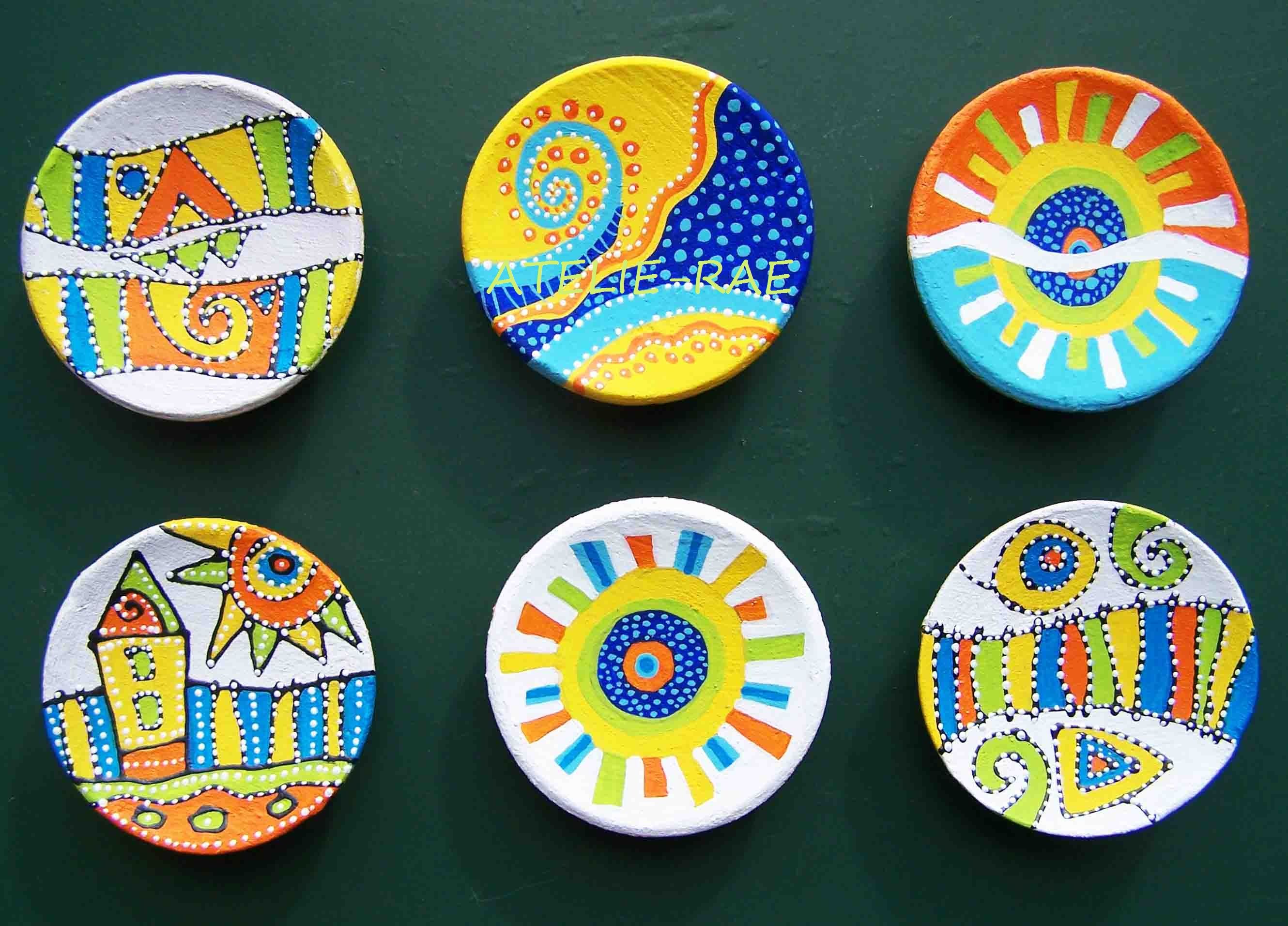Is acrylic paint permanent?
Acrylic paint is versatile paint. This paint is used by creators around the world to accentuate their creations using bold and vibrant colors. It has become a huge favorite. Why? Because of its ability to give uniform results on a wide range of surfaces. And at the same time allow experimentation, mix-matching, and recreation of popular painting styles using the same kind of paint.
Now, this may sound relatively easy and uniform to the last degree. But the truth is acrylic paints do come in different types with paints that differ from each other in some aspects. Therefore, how they behave on different surfaces can also vary from paint to paint.
So, where does all this fit into our original question – how permanent is the acrylic paint? Let us explore.
Types of acrylic paint
Simply speaking, acrylic paints are synthetic concoctions of paint made out of acrylic, or plastic, substances. Broadly, acrylic paints can be divided into latex-based and oil-based paints. Though reflecting the fact that acrylic paints can come in water solvent or chemical solvent variations.
Now, both of these variants are quick-drying, easy to apply, and vibrant. We mostly know how quickly we can scrub them off of our household surfaces every day. Moreover, these two variants do differ from each other in the aspects of application and toxicity.
Other acrylic paints are specifically designed as body paint or nail paint. And those again are for temporary use and will not act as permanent painting options for our nails or hair.
Therefore, is it true then that acrylic paints are temporary paints and cannot be used to color products permanently?
The truth is even non-toxic latex-based acrylic paint when used on glass, wood, plastics, ceramic and some metal surfaces as well as famously on textiles and fabrics becomes permanent and waterproof when they have completely cured.
Since curing is different from drying, while your acrylic paint will dry off in 4 to 8 hours it will take a minimum of 3 to 4 days for the paint to completely cure.
Some people also use non-toxic acrylic paints for coloring faces, body skin, and nails with different designs to get cool and funky art in various festivals. Those acrylic paints are temporary, not permanent. Those can be easily removed in a few hours with soap and water.

Curing acrylic paint correctly
Curing and drying are different when it comes to all paint types. It is a remarkably simple process. In this step where you allow your acrylic painted surface ample heat and air to keep drawing even when it seems like the surface has dried out. Since acrylic paint is a fast-drying paint, curing will only require up to 3 to 4 days. Although some experts say that acrylic paint can cure within a day.
At the end of the curing process ( throughout which the painted material must be kept untouched and no other layer of paint or varnish must be applied to it), the paint will have completely adhered to the surface. Therefore, increasing its durability and permanence.
Using acrylic paints on different surfaces for long-lasting results
Let us now look at the usage of acrylic paint and how to make it permanent on different surfaces one by one.
Clothes
The generic kind of acrylic paint will come off from most kinds of fabric in a single wash. However, you can easily choose to go for fabric acrylic paint. This is specially created for creators painting on textile, and pretty waterproof once they are dried.
Alternatively, you can mix special additives such as a fabric medium of good quality to make the acrylic paint permanent. Sealing using heat also works pretty well for fabrics, and pressing your creation carefully with an iron at the correct heat level can complete the process.

The type of fabric medium you should most preferably go for will depend to a great extent on the kind of fabric you tend to work on. Fabric mediums work on different fabric types by letting the painted sheep through the fabric and attach itself to individual strands, kind of like what hair color your hair.
You can also try to carefully wash your item once or twice and dry it in the air to let the excess paint leech away.
Ceramic
Acrylic paints work very well on ceramics, clay, and cement-related products. Thanks, you can easily also use them on dried clay and plaster of Paris. To make them durable – when it comes to ceramics – using a good primer and sealant is very important.
Before priming your surface, clean the ceramic with water and detergent. With little practice, you will be great at standing on the surface as well, which also happens to be a very crucial step. Always try to do multiple thin coats of priming.
Similarly, try to use two coats of paint as well. After the paint has cured well, apply a clear urethane varnish and your ceramic product will be good to go.

Plastic
Just like in the case of ceramic, a plastic surface needs to be prepared for the painting process before for the best results. Some creators will even go as far as to comment that painting on plastic is even trickier than painting on ceramic.
Also, your plastic surface needs to be primed and sand it well before the painting process is undergone. The sending process essentially removes glossy finishes. Therefore. creating a rough surface where the paint can stick to a greater extent. The kind of primer you should choose depends on your plastic type.
You can skip the sealing process with plastics if you want. But it is best to seal your product well if you have used a lot of bold colors, and if the item is going to go through a bit of rough use.
Wood
Acrylic paint will become permanent on wood easily if the correct priming and sealing process is followed. Also, the paint is allowed to cure for a long enough time. Just like with ceramics and plastics, sending is an essential part of painting on wood.
Before starting with the painting process it is also important to clean the wood surface even if it has been previously treated and stained. Ceiling the wood surface with a good quality varnish as a top coat is very essential.
If you are using a rope piece of wood that has not been heating sealed and stained before, you might go light on the sanding process. Even then it is important to even out any rough textures to increase the quality of your painting. Acrylic paint on your wood will not only become permanent but also waterproof and weather resistant. It sticks best on rough wood.
Metal
Acrylic paints are quite ideal for metal surfaces. Not only that, they can protect the metal surface from oxygen and moisture thus preventing corrosion to a great extent. You can paint your metal surfaces around the house with a good thick quote of acrylic paint to prevent them from rusting or corroding.
In the case of metals, a good varnish is the most important part. Just like with wood, paint sticks better to a slightly rough surface on metal than accent stainless surface. Therefore it is good to start with a grinding process along with the usual sanding.

Degreasing metal items is especially important if you are reusing surfaces while removing any pre-existing rusting or corroded surfaces and sanding them down is a good cleaning routine that should not be skipped. Just like in all other cases a good priming and ceiling session must be undergone.
Glass and leather
Glass and leather do not require any sanding. They are non-porous slick materials where you majorly require a medium that will allow your paint to stick to the surface.
In the case of glass, it is best to use acrylic paint specially made for glass painting. you can also use them on your transparent glass windows to increase privacy and add some good vibes to your room with beautiful designs, camouflages and patterns. besides that it works great on glass kitchenware as shown below

There is no need for heat sealing, a simple layer of varnish can do the job. In the case of leather, what you need is a special kind of sealant. You will need to prepare the leather first using a primer.
Some general tips to remember about permanent acrylic painting
There are a few ways in which you can make your acrylic paint last longer. With the usage of correct steps, most acrylic paint on a variety of surfaces can easily retain its paint like new for at least 20 years.
Using the right amount of paint
Too much paint or two little paints can damage the surface and cause the coloring to come off quicker than you would have wanted. This may sound confusing but it is imperative to use only the correct amount of paint on your creation. One way to go about this is using multiple strokes and thin layers during the painting process. Using the correct amount of paint also helps the item to cure within the right amount of time. Too much paint can make your creation look bulky and cause quick dents even before it dries completely.
Using the correct primer
No matter what your surface is made up of, it will benefit the application of using a primer before starting with the painting process. Just like acrylic paints, primers can be found manufactured by almost all paint brands and come in a variety of price points.
While you do not necessarily need to purchase a very expensive primer. A reputable brand and a good product will increase your painting’s longevity to a great extent. Apart from that, giving it ample time to dry before you begin your painting and being careful with the whole process is also necessary.

How to use baking to make your acrylic paint permanent?
Another quite effective procedure that you can adopt to make your acrylic painting durable and permanent is baking your painted item after the completion of the project. This baking is less strenuous than it sounds since all you need to do is to heat your product in an oven.
There are a few precautions that you need to take while going through this baking process. But at the end of the day, it is highly responsive and quite a safe process. It acts as an extra layer of sealing and protects the coloring and vibrancy while awarding your item with a layer of sheen and gloss.
A few introductory steps about baking in an oven that you should know before you undergo the full research, are these.
- Baking will increase the durability of your painting and decrease its curing time. It does not affect the color quality of your product. And, when done correctly, will not cause any damage to other decorative items on the surface either.
- Baking is a process that requires you to be well versed in the steps. Since you will be needing to use the correct amount of heat for the right amount of duration. Too much heat can damage your painting and at times even the surface beneath it.
- Baking does require you to be very careful throughout the process and clean later on. You mustn’t use the same oven for cooking purposes as acrylic paint can generate toxic fumes.
- The best way to top off this procedure is by adding a layer of the correct sealant on your product. But when? After it has cooled down and the paint is completely dry.
Are acrylic paint products permanent in their color when sealed?
Therefore yes, as soon as you have completed the curing process of acrylic paint without touching it or manipulating it throughout this duration and sealed the paint with the correct kind of sealant, acrylic paint is permanent on your product.
FAQs
Are all acrylic paints permanent?
All variants of acrylic paint are permanent when cured and dried correctly. Creators can apply the correct primer and sealant to their products for better results. Since acrylic paints cure without any major changes caused in the designs due to run-offs or paint expansions, all their variants are used often for permanent painting procedures.
Are acrylic paints permanent on products used as utensils?
Acrylic paints will become permanent even on utensil products like ceramics when taken through the correct procedure.
However, a simple priming and ceiling process does not make them suitable to be used on articles of daily consumption. There are special procedures and sealants available in the market.
Those things can make your acrylic painting food safe and resistant to heat and cooking oils for the safety of both your creation as well as the owner and consumer.

Being associated with art and craft field since decades as a hobbyist and life long learner has given me an opportunity to learn many new things related to art, craft, paints and pottery which i am trying to share with your guys on this website. I have expertise of being professional painter and potter for the last 20+ years
I have learned mind blowing cool tips and insights which makes me a person with ability to improvise and come up with creative ideas and solutions to make stunning and impeccable art pieces of all types which are adored by people across the globe on this website and other platform.


